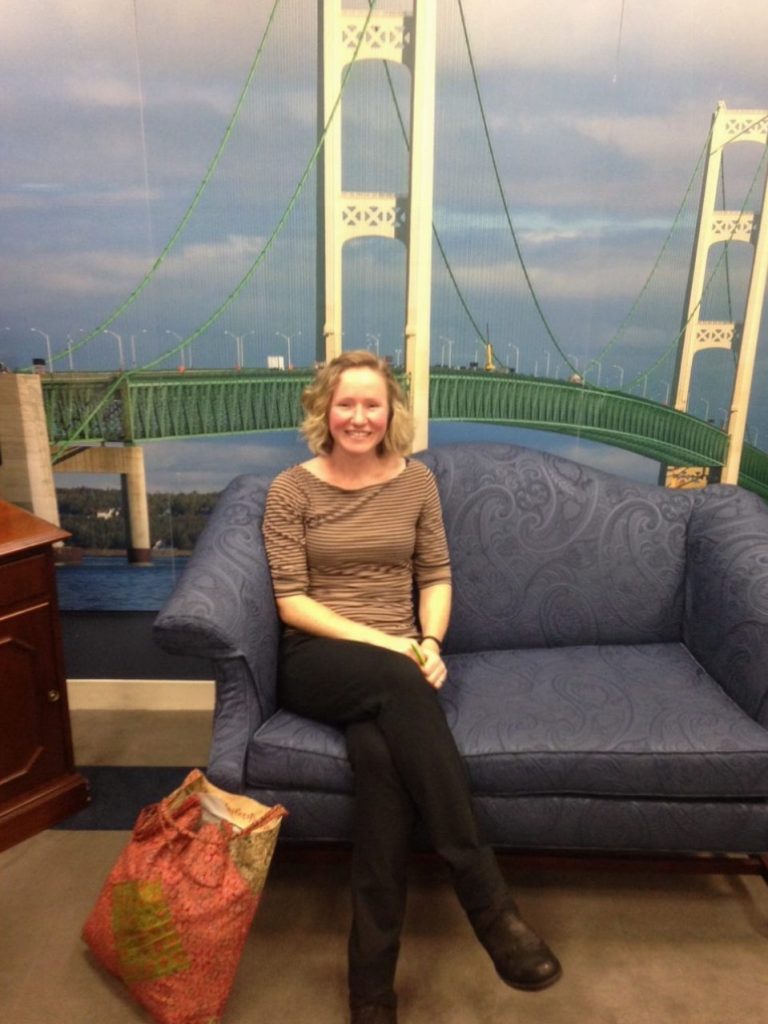Since the recent election, many people have been inspired to get involved in politics locally and up to the federal level. Funding for science and environmental regulation, in particular, is threatened. Although some thrive at civic involvement, for others communication and activism, especially at the federal level, feels bewildering, overwhelming, and just not that fun. Seeing what science policy looks like and who is doing it can make it a bit more tangible and engaging.
Recently I had a scientific meeting outside of DC and decided it would be a good opportunity to visit my representatives. I previously worked as an intern for the Soil, Crop, and Agronomy Society’s policy office, so I know some of the ropes, but wanted to share my experience for others.
Offices for our representatives, Senators Stabenow and Peters, and Representative Upton (Kalamazoo County) sit in a group of large buildings on the backside of the US Capitol that anyone willing to walk through a metal detector can simply walk into. I found office locations and phone numbers on the internet, called to get the names of staff dealing with agriculture, energy, or science (relevant to my talking points), and followed directions to email the scheduler to set up a meeting. I ended up with a planned meeting with Mark Rattner, energy staff, in Rep. Upton’s office, and a roadmap of relevant staff names (and pestering cred) for the senate offices.
There are two things that are apparent from an in-person visit to Capitol Hill. One is that Congress is run by legislative staff in their 30s. Each office houses a hierarchy of “staffers”, many dedicated to gathering information and constituent views on specific areas (e.g. environment, energy, agriculture), and reporting information to the representative. Many are eager to have more knowledge on a topic, and your message may go further if you speak directly to a staffer that addresses issues related to your concern.
Another thing that jumps out of the DC background is that representatives serve local constituents. All Michigan offices had local Michigan decor (even cereal as a snack, in honor of Kellogg), the staff were eager to discuss local connections (“I’m a Spartan too!”), and offices are surprisingly willing to do what they can to meet with you and listen to your concerns. For example, I never got through to meet with the agriculture legislative assistant in Sen. Stabenow’s office, but I dropped by and explained the reason for my visit (and importantly, my address!), and they found staff that worked under him that were available to meet.
My messages were a combination of general (e.g., protecting funding for basic research) and specific concerns (e.g., recent issues or upcoming vote), and I aimed to tailor talking points to each representative according to their committee involvement and current stances. I also used specific examples and mentioned personal experiences and my expertise.
I encourage students to take advantage of the many opportunities for up-close looks at science policy on the hill (see Bonnie McGill’s blog post for one), and support others as they venture into this process. Even front-desk calls from constituents expressing concerns are tallied and reported to the representative. Everyone has expertise on certain subjects, so don’t shy away from offering staff your expert opinion or knowledge. They are hungry for it!
Dr. Sarah Evans is a KBS assistant professor who studies microbial and ecosystem ecology in MSU’s Department of Integrative Biology.


A legacy of conservation; a commitment to sustainability.
3700 E. Gull Lake Drive
Hickory Corners, MI 49060
(269) 671-5117
info@kbs.msu.edu